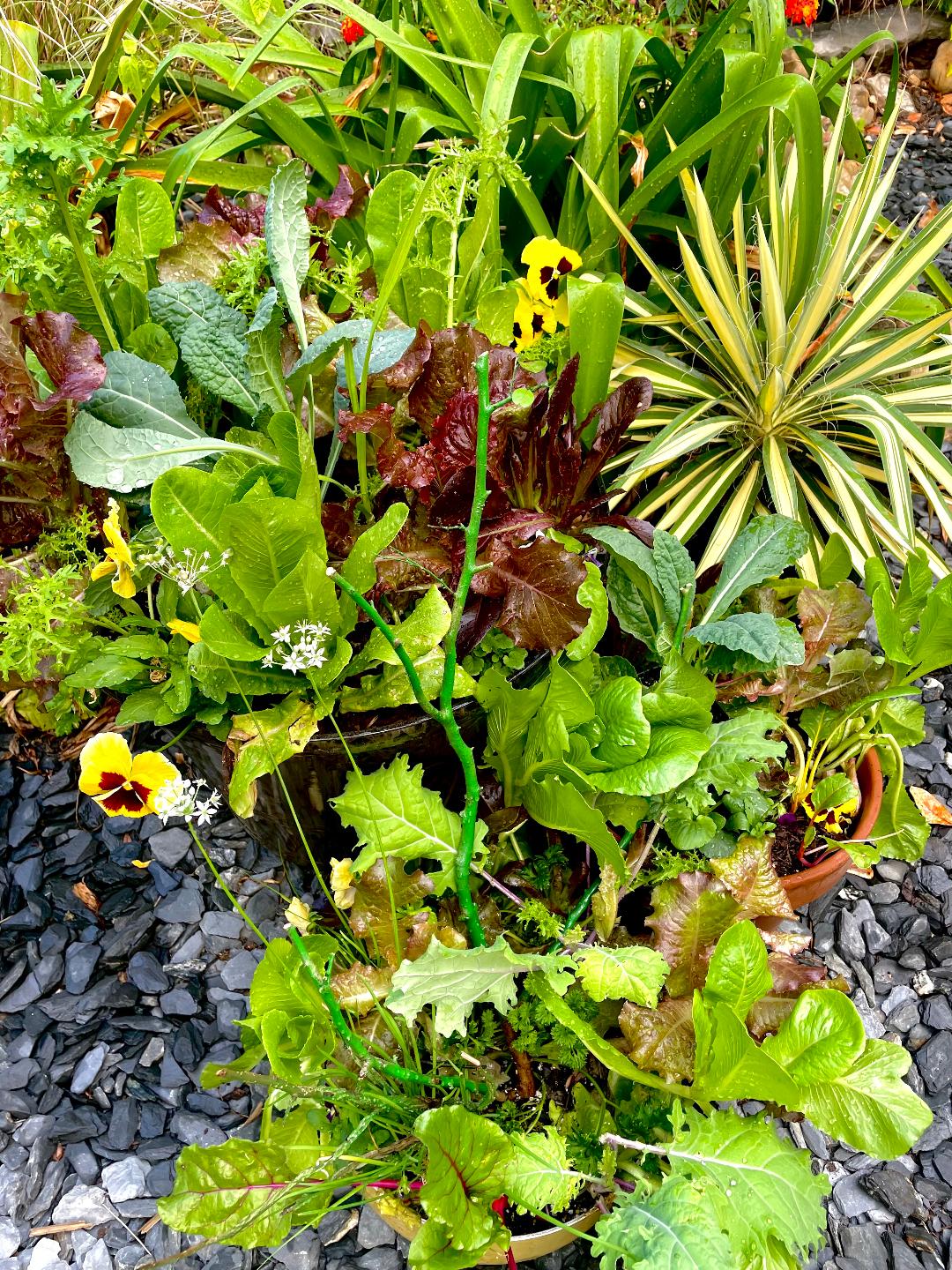Colorful salads are fun and easy
Published 10:00 am Sunday, October 9, 2022
|
Getting your Trinity Audio player ready...
|
I’m doing something fun, surprisingly easy, colorful, and nutritious for winter that I would have never dreamt of while growing up: sprouting beautiful salads. In pots.
As a kid, the closest I came to eating green stuff was during special holiday meals when Granny would nest half a canned pear on a single leaf of lettuce and topped it with a dollop of Miracle Whip, shredded cheese, and half a red grape as a faux cherry. But TBH the leaf lettuce she used tasted like water.
One of my most poignant food memories is from my teens when my folks managed to scrape up enough money for me to attend a music clinic trip to the coast with a small group of musicians and our band director. I was so grateful that when we stopped at a café on the way, I even ate the salad that came with the blue-plate meal. Maybe it was just my teenage appetite, the basket of saltines, or the vinaigrette salad dressing, but to my surprise it was delicious. And I have relished salads ever since.
Now that I grow my own salads, I don’t go with the plain, bland green lettuce of my childhood; I grow my own mix of different lettuces, including both smooth and crinkled leaves, and a range of colors from pale to deep green, burgundy, and red. I also throw in some vibrant-hued and nutritious kale and Swiss chard, and edible flowers.
This blend of young salad greens, similar to what we put together at salad bars, could also include chopped leaves of chives, garlic chives, turnip, mustard, spinach, young beet foliage, and even dandelion, is called mesclun, which means “mixed.” Add chopped edible flowers, walnuts, raisins, toasted homemade bread croutons, a sprinkle of shredded lettuce, and it can be a real feast.
Though most folks grow lettuces in late winter or early spring to mature and harvest before it gets hot which makes many greens taste bitter, they are fantastic garden plants in the fall and early winter, and get sweeter after a frost. They can be grown in regular rows, but are more productive when grown across wide rows in or raised beds – or containers. I just sow the seeds directly on the soil, wet them down lightly once a day til they sprout (usually within days), then get them rooted deeply by gradually watering a bit longer but less frequently, every two or three days. And I tuck a little mulch around and under the plants to keep the soil from crusting over or splashing onto the leaves.
A handful of tricks I use include sowing thinly or thin the plants out so they don’t crowd one another and reduce production or increase disease problems; fertilizing very lightly every couple of weeks to keep them growing steadily; covering with a shade cloth to protect from hot sun, or insect netting to reduce insect problems (always do this with broccoli and cabbage). I stagger my plantings, starting a new row or pot every two or three weeks, lest I end up with way too much lettuce to eat at one time. I start snipping older leaves for salads within three or four weeks.
When grown in pots on the porch or patio, especially with a few edible violas added, it’s as beautiful as delicious and nutritious! And in addition to it all but forcing me eat more healthy food, grown safely in my own garden and eaten within minutes of harvest, it makes me feel kinda smug, knowing I’m at least a tiny bit more self-sufficient.
Felder Rushing is a Mississippi author, columnist, and host of the “Gestalt Gardener” on MPB Think Radio. Email gardening questions to rushingfelder@yahoo.com.






